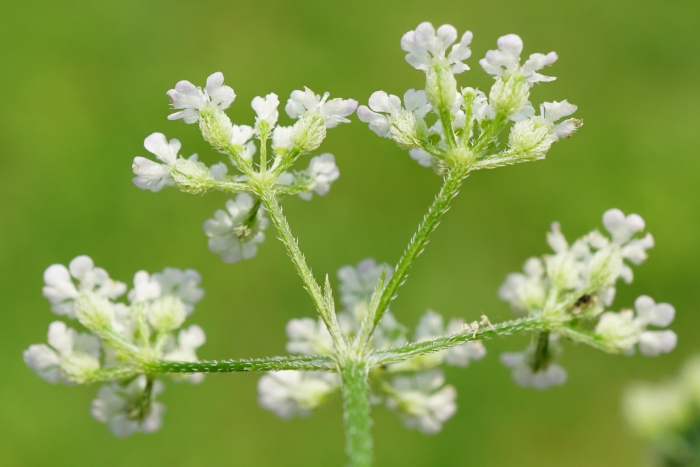Erect Hedgeparsley
(Torilis japonica)
Erect Hedgeparsley (Torilis japonica)
/
/

Patrick Hacker
CC BY 4.0
Image By:
Patrick Hacker
Recorded By:
Copyright:
CC BY 4.0
Copyright Notice:
Photo by: Patrick Hacker | License Type: CC BY 4.0 | License URL: http://creativecommons.org/licenses/by/4.0/ | Rights Holder: Patrick Hacker | Publisher: iNaturalist | Date Created: 2020-08-06T14:43:32-07:00 |
























Estimated Native Range
Summary
Torilis japonica, commonly known as erect hedgeparsley or Japanese hedge parsley, is an annual or biennial herbaceous plant. It is native to a variety of habitats including open woodlands, forest edges, grasslands, and disturbed areas in Western Europe, Central Asia, and the Mediterranean region. It typically grows 2-4 feet tall and has a preference for calcareous soils. The plant features umbels of small white flowers that bloom in the summer and are followed by bristly fruits that cling to animal fur and clothing, aiding in seed dispersal.
Erect hedgeparsley is known for its ability to quickly colonize disturbed soils, making it useful for erosion control in some regions. However, its aggressive growth and prolific seeding can lead to it becoming an invasive species, outcompeting native vegetation, particularly in North America. It is often found in pastures, woodland margins, and waste sites. Gardeners should be cautious about planting Torilis japonica and check local regulations, as it is considered invasive in some areas. In cultivation, it requires minimal care, thriving in full sun to part shade and tolerating a wide range of soil conditions, including poor, rocky, or disturbed soils.CC BY-SA 4.0
Erect hedgeparsley is known for its ability to quickly colonize disturbed soils, making it useful for erosion control in some regions. However, its aggressive growth and prolific seeding can lead to it becoming an invasive species, outcompeting native vegetation, particularly in North America. It is often found in pastures, woodland margins, and waste sites. Gardeners should be cautious about planting Torilis japonica and check local regulations, as it is considered invasive in some areas. In cultivation, it requires minimal care, thriving in full sun to part shade and tolerating a wide range of soil conditions, including poor, rocky, or disturbed soils.CC BY-SA 4.0
Plant Description
- Plant Type: Herb
- Height: 1.5-3 feet
- Width: 1-2 feet
- Growth Rate: Moderate
- Flower Color: Pink, White
- Flowering Season: Spring, Summer
- Leaf Retention: Deciduous
Growth Requirements
- Sun: Full Sun
- Water: Medium
- Drainage: Medium, Fast
Common Uses
Bee Garden, Bird Garden, Butterfly Garden, Low Maintenance
Natural Habitat
Native to open woodlands, forest edges, grasslands, and disturbed areas in Western Europe, Central Asia, and the Mediterranean region
Other Names
Common Names: Upright Hedge Parsley, Japanese Hedge Parsley, Cerefólio-De-Cerca
Scientific Names: , Torilis japonica, Anthriscus vulgaris, Caucalis anthriscus, Caucalis anthriscus, Caucalis aspera, Caucalis coniifolia, Caucalis coniifolia, Caucalis elata, Caucalis japonica
GBIF Accepted Name: